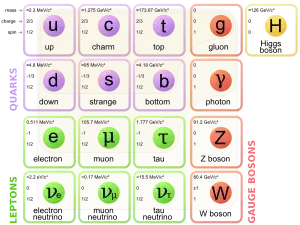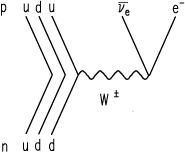Gluons are bosons, they have spin one and are mediators of the strong force. They have mass 0 and there is no weak interaction vertex with a gluon.
The extract is talking of the Higgs field, not the Higgs boson. A field in physics is
A field is a physical quantity that has a value for each point in space and time at that point.
The Higgs field permeates all space and is distinct from the Higgs boson. It is the field that gives the mass to the Z and W when the electroweak symmetry is broken. Symmetry is broken at every point is space and time ( the mexican hat ) that describes the field at each point.
The Higgs boson is a particle that appears because of the group structure of the Standard Model, and is on par with all the other particles.
It is the Higgs field that gives mass to the particles of the theory which have electroweak vertices ( interactions) and to the Higgs boson itself. .
edit after comments.
Note that the Higgs field gives masses to elementary particles. If you see that they are massive in the table it means they have weak interaction vertices and the Higgs breaking of symmetry raises them from the zero mass they would have had before breaking.

These are the particles that build up all matter
The electrons appear in the atoms, the quarks are always bound and appear according to the rules of SU(3) color. The three quarks that compose a proton, for example , exist in a tight "bag" exchanging gluons with each other, and the gluons exchange gluons with each other etc. in a "soup" of contained interactions that can be computed or approximated. This means that there are binding energies and invariant masses between all these constituents that give the mass we measure for the proton, while the central three quarks have very small masses as you can see in the table ( or go to the link for enlargement). This is due to special relativity that reigns at these dimensions and energies.
The quarks do have electroweak vertices in interacting with leptons , a simple example neutron decay:


